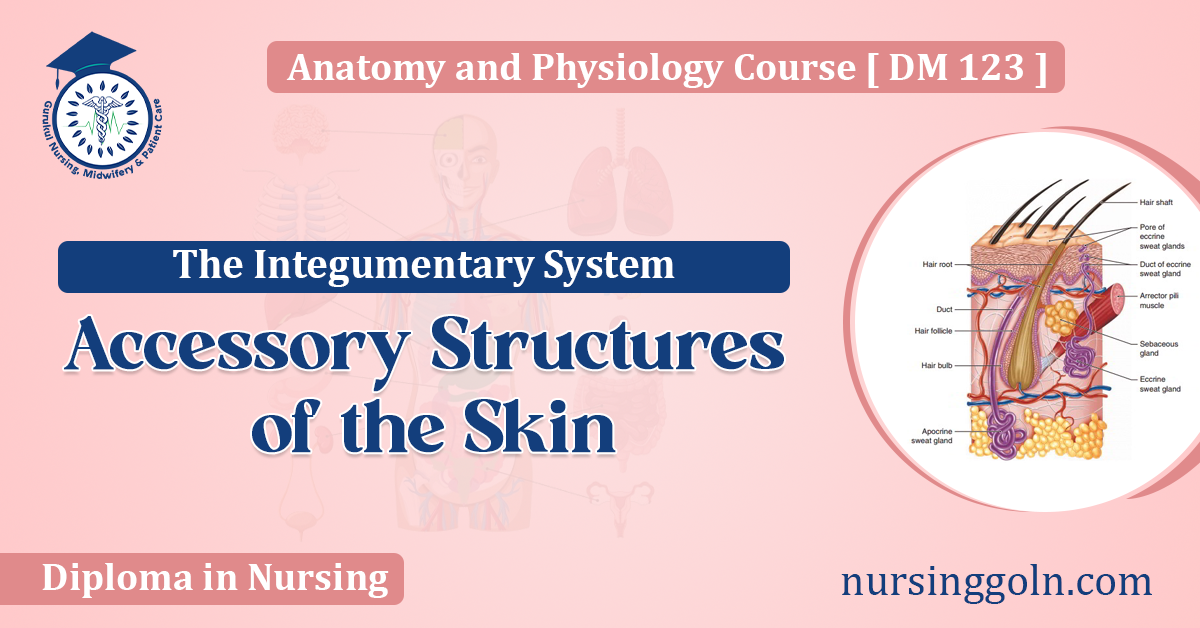The integumentary system, often simply referred to as the skin, is the largest organ in the human body. However, its importance goes beyond mere size. The skin serves as the body’s primary defense against external threats, a regulator of temperature, and an organ of sensation. But the skin is not just a singular structure. Instead, it’s a complex system that includes a variety of accessory structures. In this article, we will delve deep into these structures and their roles.
Structure of the Skin
Before diving into the accessory structures, it’s essential to have a basic understanding of the skin’s structure. The skin is primarily composed of three layers:
- Epidermis: The outermost layer, which contains the protective keratin and melanin pigments.
- Dermis: A thick, inner layer comprised of connective tissues, hair follicles, and sweat glands.
- Hypodermis (Subcutaneous Layer): This is mostly made of fat and connective tissues and aids in insulation and cushioning.
Accessory Structures of the Skin
The accessory structures of the skin include hair, nails, and a variety of glands. Each of these structures plays a unique role in maintaining the body’s homeostasis, protection, and aesthetic appeal.
- Hair
Hair covers most of the human body, though it varies in thickness, length, and color. The primary functions of hair include protection, sensory function, and thermoregulation.
- Structure of Hair: Hair originates from hair follicles, which are embedded deep in the dermis. Each hair consists of a shaft (the part that protrudes from the skin) and a root (the part embedded in the skin). Hair is primarily made of a protein called keratin.
- Growth and Hair Cycle: Hair grows in cycles. The growth phase (anagen) can last for several years, followed by a brief transitional phase (catagen) and a resting phase (telogen). At the end of the resting phase, the hair falls out.
- Types of Hair: There are several types of hair, including terminal hair (found on the scalp, eyebrows, and eyelashes) and vellus hair (fine, light-colored hair that covers most of the body).
- Nails
Nails are hard keratinized structures that protect the tips of our fingers and toes. They also enhance sensitivity and provide a counterforce to the finger pad, improving the precision of delicate movements.
- Structure of Nails: The visible part of the nail is called the nail plate, while the nail bed is the skin upon which the nail plate rests. The white crescent-shaped area at the base of the nail is the lunula.
- Growth of Nails: Nails grow continuously, with fingernails growing faster than toenails.
- Glands
The skin is home to various glands, each serving distinct functions:
- Sebaceous Glands: These glands are located throughout the body except on the palms and soles. They produce sebum, an oily substance that lubricates the skin and hair, preventing them from drying out. Sebum also has antibacterial properties.
- Sweat Glands: There are two main types of sweat glands: eccrine and apocrine. Eccrine sweat glands are more numerous and are found throughout the body, especially on the palms, soles, and forehead. They produce a clear sweat primarily composed of water and salts. Apocrine sweat glands, located in the armpits and groin, produce a thicker sweat that, when decomposed by bacteria, is responsible for body odor.
- Ceruminous Glands: Located in the ear canal, these glands produce cerumen, or earwax, which prevents dust and foreign particles from entering the ear.
- Mammary Glands: Present in the breasts, they produce milk.
Functions of the Integumentary System
The skin, along with its accessory structures, plays a plethora of vital roles:
- Protection: The skin acts as a barrier, shielding the internal body from mechanical damage, pathogens, and harmful UV radiation.
- Thermoregulation: The skin helps regulate body temperature. Blood vessels in the skin can dilate or constrict, and sweat glands can produce sweat to cool the body down.
- Sensation: The skin is rich in nerve endings and receptors that detect touch, pressure, temperature, and pain.
- Excretion: Through sweat, the body can excrete some waste products.
- Vitamin D Production: When exposed to UV light, the skin produces vitamin D, essential for bone health.
- Aesthetic and Social Functions: Our skin, hair, and nails play roles in social communication. They can signal emotions (like blushing) and are often modified for aesthetic or cultural reasons.
Conclusion
The integumentary system, consisting of the skin and its accessory structures, is intricate and multifunctional. Its vast array of roles, from protection to sensation, highlights its significance. Understanding its accessory structures is not just a matter of anatomy but also a glimpse into the incredible complexity and capability of the human body. As our primary barrier against the external environment, the integumentary system is a testament to nature’s ingenuity and the evolutionary processes that have crafted such a versatile organ system.
